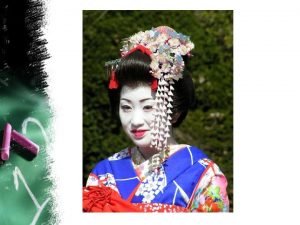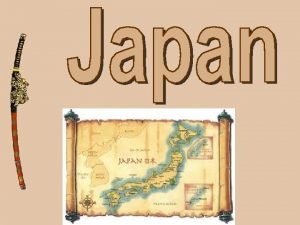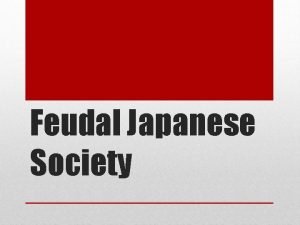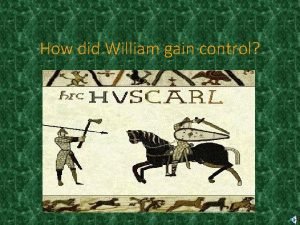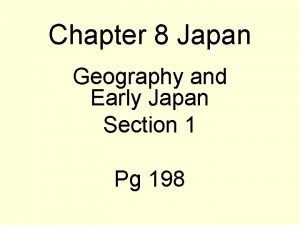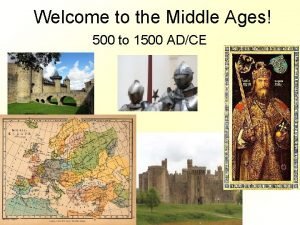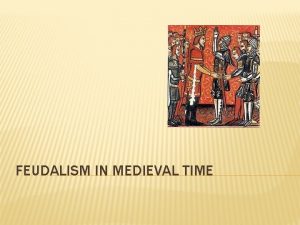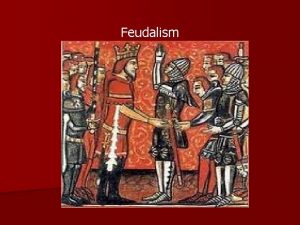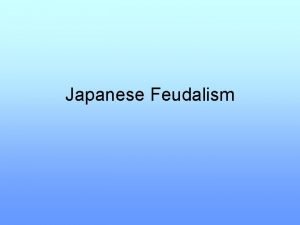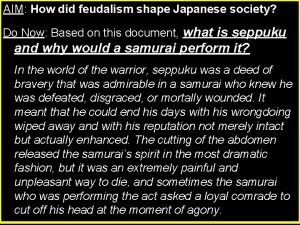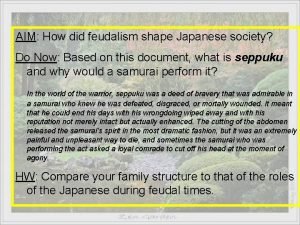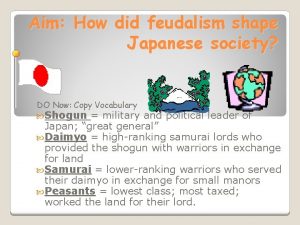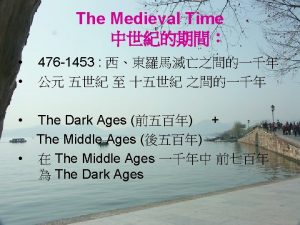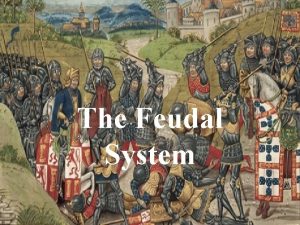Japanese Feudalism AIM Did the Japanese feudal system












- Slides: 12

Japanese Feudalism AIM: Did the Japanese feudal system advance their development?

DO NOW: INTRODUCTION TO JAPANESE FEUDALISM In the Middle Ages, the main government in Japan, led by the Japanese emperor and the daimyos (or local lords), began to lose power. The daimyos became more interested in money and luxury than being good leaders. As a result, conflicts increased and people started seeking protection. The power of the emperor and the daimyo decreased. Just like in Europe during this time, a political system of feudalism started – the power was spread out amongst many powerful leaders. These leaders started exchanging land for protection, loyalty and labor. Q: What is feudalism?

COMPARE: JAPANESE AND EUROPEAN FEUDALISM • The Japanese system of feudalism was very similar to the system of feudalism in Europe in the Middle Ages. In Europe, there were Kings; in Japan there was an Emperor. In Europe there were knights; in Japan there were shogun and samurai. To provide military protection for their lands, the daimyos (who were lords) hired samurai (who were warriors). Each samurai swore loyalty and promised to honor a strict code of honor (called Bushido). In return, the daimyo promised the samurai with property. The samurai also promised to protect the peasants in exchange for food and labor. Q: How is Japanese feudalism similar to European feudalism

DIRECTIONS: Read about the powers that each social group had in the Japanese Feudal System. Highlight/underline important words and phrases, and circle things that you do not understand.

Peasants made up 75% of the population and were mostly made up of farmers and fishermen. They had very low social status and no political power. However, they produced the food for all the other classes. Peasants paid taxes to the upper class. This group worked just to keep themselves alive and to pay their taxes to the lord. They were free to leave the land whenever they liked. Some peasants also served as foot soldiers in feudal wars. On rare occasions, an able peasant soldier might rise through the ranks to become a samurai himself.

Peasants

Shogun • Shogun was the chief military general of the country. He also controlled the country’s financial affairs (money), courts, and government appointment 9 which people would have jobs in government). Although the emperor still sat on the throne, the shogun actually ruled Japan. The shogun gave lands to vassal lords, who agreed to support him with their armies in time of need. These great warrior lords were known as daimyos. For the next 800 years the shoguns will rule Japan with the support of the daimyos. This position was passed from father to son.

Emperor was the highest social status. He was the leader of Japan in name only. The shogun allowed the emperor to remain in his throne as a symbol of unity. He was the religious leader but was under control of the shoguns.

Samurai, or professional warriors, were similar to the knights of medieval Europe. In return for promises of loyalty and service, the samurai received land from the daimyo. This warrior class kept order. They were loyal to the shogun and the daimyo. Samurai were the ones that went out and collected the taxes for the daimyo. They were respected by the peasant farmers. When a samurai passed, members of the lower classes were required to bow and show respect. If a farmer refused to bow, the samurai was legally entitled to chop off the person’s head.


Daimyo or ruling leader, controlled many other samurai and governed large areas of farmland. He was the most powerful samurai. The daimyo were the shogun’s representatives. They ran the estates according to the shogun’s rules. The daimyo were what were known as noble lords in Europe. Their swords were valuable possessions to them because they were members of the warrior class. During the 1500’s the daimyo fought one another for power and land. As a result, Japan fell into a long civil war.

Japanese Feudalism Response: DIRECTIONS: After reading about the powers that each social group had in the Japanese Feudal System, write a response below explaining the jobs of each social group and evaluate which group was most important. • Explain which group was the most important • Explain which group had the most power • Summarize argument (conclusion)
 Feudal japan pyramid
Feudal japan pyramid Japanese hierarchy
Japanese hierarchy Japanese feudal system
Japanese feudal system How did william gain control of england
How did william gain control of england Emperor shogun daimyo samurai peasants
Emperor shogun daimyo samurai peasants Social structure of japan
Social structure of japan Describe japan’s geography.
Describe japan’s geography. Prince shotoku
Prince shotoku Feudal social pyramid
Feudal social pyramid Feudalism and manorialism venn diagram
Feudalism and manorialism venn diagram How did feudalism shape medieval society
How did feudalism shape medieval society How did feudalism organize society
How did feudalism organize society Russia 1917
Russia 1917
